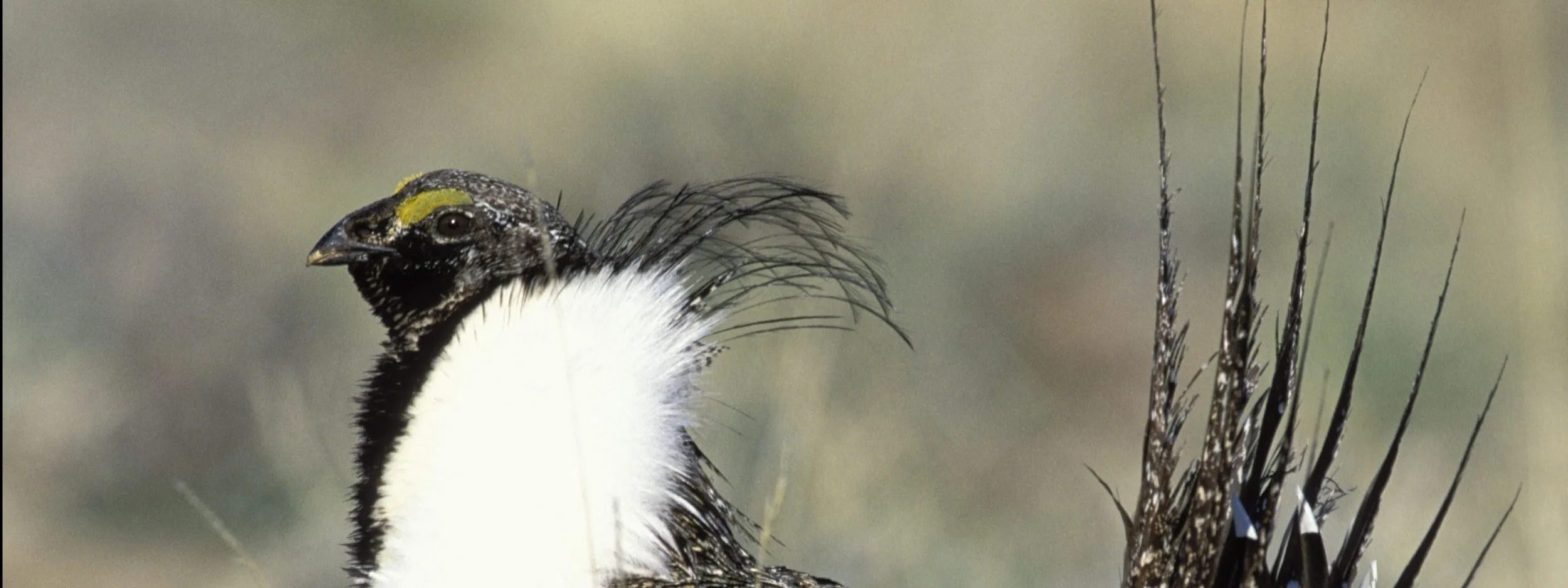Sage-grouse Conservation Success Is a Mosaic
Today, Secretary of the Interior Sally Jewell announced (video) the release of a set of revised resource management plans that contain special protections for greater sage-grouse on lands managed by Bureau of Land Management (BLM) and Forest Service across the West. At the same time, Sec. Jewell announced that, as a direct result of these revised plans, greater sage-grouse do not warrant protections under the Endangered Species Act.In Idaho, 23 management plans were amended.While the updated plans for Idaho are far from perfect, they lay a foundation for protecting and restoring sagebrush that Idaho's sage-grouse and other wildlife depend on.Sage-grouse habitat has diminished by 50% across the West, and sage-grouse numbers are down to 2% of historic numbers. Sage-grouse habitat also supports over 300 wildlife species, including mule deer, pronghorns and golden eagles.The Idaho Conservation League has a long history of sage-grouse conservation. ICL has served on both the Idaho State Sage-grouse Advisory Committee and Gov. Butch Otter's sage-grouse task force, which developed recommendations that were considered in the management plans for lands within Idaho. Having the state of Idaho involved from the beginning helped craft a solution that is largely based on Idaho's needs.In addition to providing increased protections for sage-grouse, today's decision should also provide a sense of relief for ranchers, mining companies, utility companies, sportsmen and recreationists. Interest groups whose activities could impact sage-grouse would have gone through an extensive consultation process with the U.S. Fish and Wildlife Service had sage-grouse been listed.While the plans were based on Idaho's own recommendations, the final plans are actually somewhat stronger than Idaho's recommendations. All along, ICL has said that we could support the original state recommendations for BLM lands as long as complimentary conservation measures were undertaken on state lands managed by the Idaho Department of Lands and on private lands supporting significant sage-grouse habitat. But the Idaho Department of Lands was unwilling to withdraw critical areas from oil and gas development, and we have yet to see the integrated approach that we were hoping for from the counties. As such, we support the somewhat greater level of protections offered by the BLM. These plans include a 2-year moratorium on new hardrock mining claims in sagebrush focal areas. This moratorium may be extended into the future.Without these new Idaho resource management plans in place, the safety net to prevent a listing decision would be gone and sage-grouse would certainly need protection under the Endangered Species Act.While these plans are not as protective as we would like in other respects, they retain flexibility for partners who want to protect sage-grouse habitat while continuing traditional uses. We believe that we can get a longer-lasting conservation gain by working together to protect sage-grouse habitat, thus avoiding the need to list sage-grouse under the Endangered Species Act in the future.One thing is clear: To keep sage-grouse part of Idaho's landscape into the future, we must continue an "all hands, all lands" approach. The partnerships built so far are crucial for sage-grouse conservation and we need to see these efforts expand. For this to be a true conservation success story, all parties need to keep working on behalf of sage-grouse and healthy sagebrush habitat.

